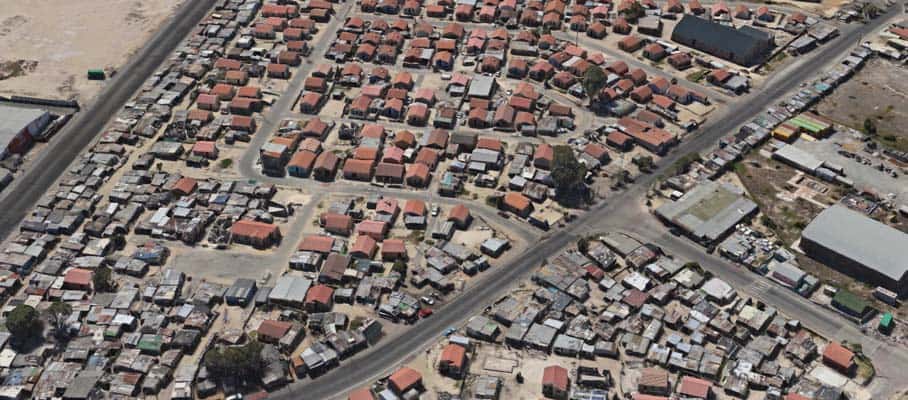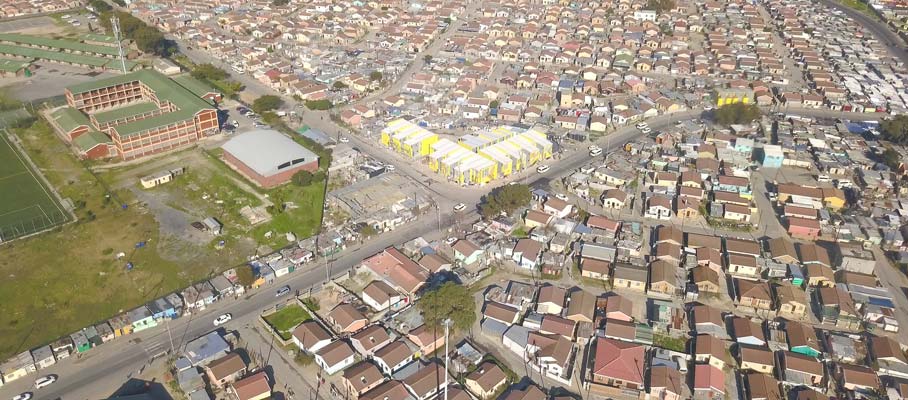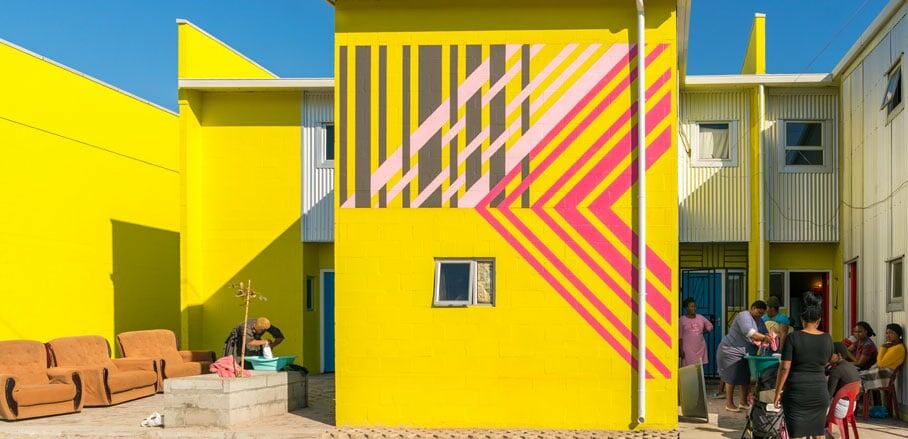Empowerment Through Blocking-Out In Cape Town’s Informal Settlements
How can architectural solutions contribute to increase liveability in informal settlements? Alfredo Brillembourg portrays how the process of blocking-out facilitated the empowerment and upgrading in the informal settlement of Khayelitsha.
Where do we stand today when it comes to alternative conceptions of urbanisation? What are the forces vis-à-vis the political beliefs and frameworks that inform contemporary roles and models for architectural practice? Since the tail-end of the 1990s, one can witness a growing frustration of a generation of architects and spatial practitioners, who are no longer willing to accept the truism and conventional understanding of the architect as the sole power who is in charge of space
The Urban Think Tank (UTT), both in our research and practice, has spent a long time thinking about how our work in South Africa has contributed to advancing ideas around upgrading communities. UTT initiated the research on shack upgrading solutions with the help of our students at ETHZ in 2014 to see if we could develop an urban upgrade methodology that maximises user input and transparency. The aim was to pilot a project for replicability and, ultimately, scalability. With private funding, we initiated test designs (2016-2018) and are now building the final design (2018-ongoing) with a professional team run by UTT/Riverside Consultants and the NGO Ikhayalami in Cape Town. In the construction phase, we test solutions for what we call “advanced reblocking of informal communities” in South Africa.
Do these ideas translate into transformative practice? And, most importantly, are we architects just talking to one another, failing to engage with practical realities?
Blocking-Out: Basic and Advanced
“Blocking-out” describes a design and implementation process pioneered by the NGO Ikhayalami. All phases of the process — from identification of need, to design and implementation — are led by the community and organised networks of the urban poor, supported by NGOs, and in partnership with the state.
A core principle of blocking-out is that the community is involved in all aspects of the project. Indeed, we have always insisted that the people who were directly affected participated in our projects. This had everything to do with our belief that the residents of a favela or barrio or township know best what they need and come up with solutions and techniques singularly appropriate to their circumstances. Typically, nothing taught in schools of architecture or learned through practice touches on these issues. What is equally important is context: townships and barrios are informal settlements, but they come into being as a result of location-specific issues and cultures.
The scheme involved the reconfiguration of an informal settlement into a more rationalised spatial layout, which allowed the creation of demarcated pathways or roads, public and semi-public spaces, and emergency services access. This facilitated the provision of infrastructure and resulted in enhanced circulation, greater safety, access to basic services, and, above all, the recognised “right-to-remain” legal status for squatter communities.

Original site © U-TT

Aerial view of empower shack development, 2022 © U-TT
We designed a blocking-out unit that would be double-storied and possibly involve new structural techniques and materials, allowing residents to upgrade their homes safely. The approach has been acknowledged by an international audience as “best practice” and has been supported and endorsed by thousands of shack dwellers connected to Slum Dwellers International (SDI).
In conjunction with Ikhayalami, we developed the concept of Advanced Blocking-Out and the Empower Shack respectively. While it is based on the two-story unit, we did not believe in the one-size-fits-all design; instead, the scheme accounted for the varying needs and aspirations of the residents. They decided whether larger shacks reduce their footprint, or whether all households maintain the same amount of floor area they occupied prior to blocking-out.
During the design process, the community weighed in with whether each unit should include yard space in the form of courtyards. Construction materials were provided at a subsidised cost and included walls for a structure that covered an area of up to twenty square metres. Families who have bigger shacks needed to make their own plans for enlargements if they wanted to exceed this limit. The option of upgrading to a two-story shack in a cluster of row houses increased the density and enabled the flexibility necessary for multiple configurations of the units.
The Empower Shack solution had three goals: to increase the housing density to improve the urban environment and the community’s living standards; to promote community participation; and to consolidate community resources – time, land, and income – for a successful outcome.
As for the concrete project in Khayelitsha, there were three main agents: the leaders of the community, mainly men, and the women whose strength of character and initiative are widely acknowledged, who could organise Khayelitsha’s sixty-eight households. They also had valuable skills and experience, such as bricklaying, carpentry, and other construction work or managing a project. Lastly, the state, associated with the land proprietors, could permit the development of occupied land in order to extract economic advantage and generate permanent housing.
Although the residents on our site had no legal claim to the land they occupied, they had user rights over that land according to section 25 (5) of the South African Constitution: while it was possible for the government to dislodge them in theory, the consequences of this would be fraught and difficult to handle. This gave everyone involved in the Khayelitsha project the confidence to proceed as though permanence were assured. To help the community grasp the process, we proposed the outcome we anticipated, we invented games, using woodblocks, to illustrate the land redistribution.
We are under no illusions that this project can be perceived as architects coming to the rescue of a family, community, or an urban condition. Indeed, it can be seen exactly as that paternalistic, “we know best” attitude that underlies the typical failed urban renewal schemes. Nevertheless, we believe firmly that design in general and architecture in particular have the potential—and the obligation—to contribute to positive social change, and that the blocking-out project in Khayelitsha is but one example of this.
